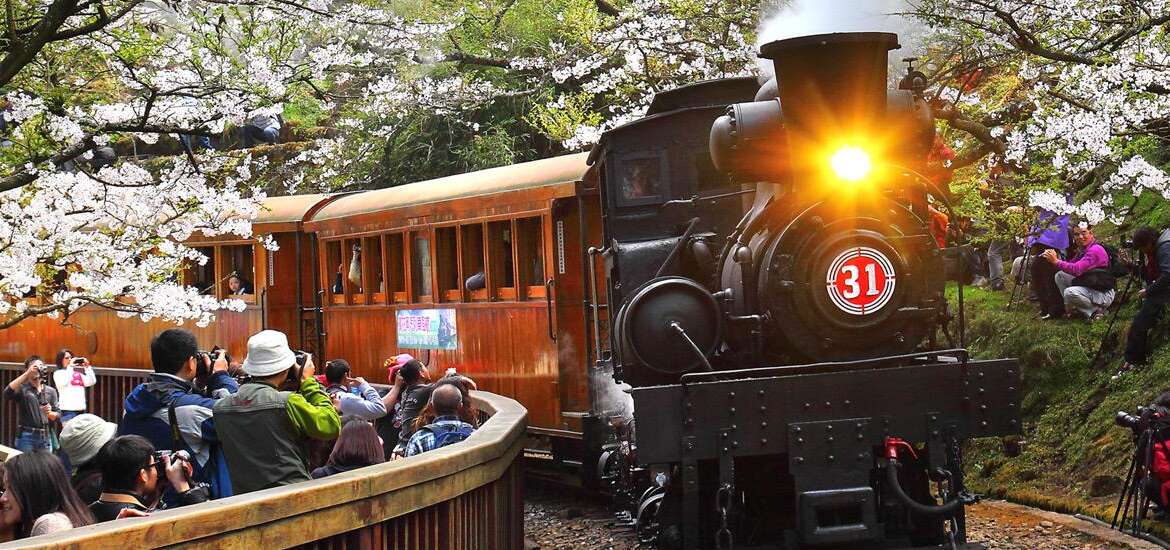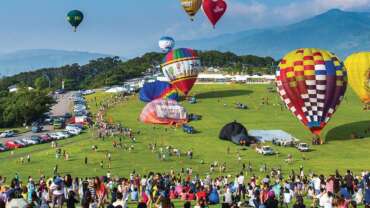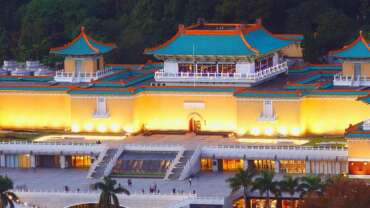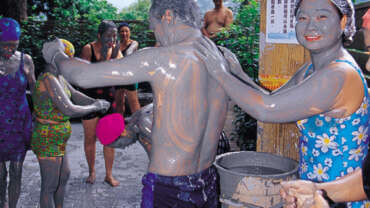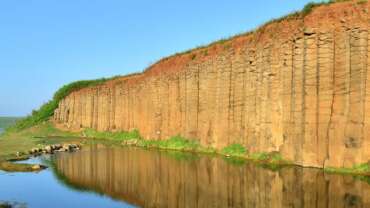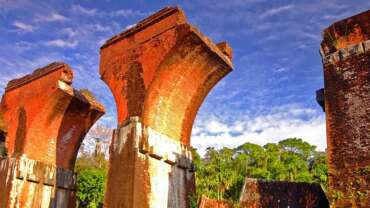Southern Taiwan
Southern Taiwan is full of history and culture. Tainan City is the island’s oldest city. Until the late 19th century, it had also been a political, economic and cultural hub. Thus, the city features plenty of historic sites. The Tropic of Cancer passes through Chiayi City, and thus Tropic of Cancer Solar Exploration Center has been built to highlight the city’s unique geographical trait. World-famous Alishan Forest Recreation Park boasts high-elevation forest railways and off-the-beaten-track old hiking trails, making it a must-see for visitors in Taiwan.
It is warm like the summer all year round in Southern Taiwan. In Pingtung, Kenting Park is ideal for scenic scuba diving and all sorts of other water activities. Eluanbi, the southernmost tip of Taiwan, offers magnificent views of the Pacific Ocean on its left and the Taiwan Strait on its right.
Chiayi County
Chiayi’s attractions are mostly of cultural and historical interest. Foremost among these is Lantan, which used to be called “foreigner’s stockade”.
Bordered by mountains on one side and the sea on the other, Chiayi County is the only county in Taiwan with three major national scenic areas: Alishan National Scenic Area, Southwest Coast National Scenic Area, and Siraya National Scenic Area, each presenting a unique view of nature’s wonders, from mountains to plains to ocean views. Alishan, located in the east part of the county by Taiwan’s tallest peak, Yushan, is the homeland of the Tsou indigenous people. This area is famous for its breathtaking sunrise views and cloud formations, towering ancient trees, colorful cherry blossoms, the world-famous Alishan Forest Railway, and secluded forest trails, valleys, and waterfalls. The area’s appeal is further heightened by the mountain culture and ancestral legends of the Tsou. The fishing harbors of Dongshi and Budai on the west coast are good places to experience the county’s oyster industry, coastal ecology, and views. In recent years, Dongshi Fisherman’s Wharf has become a summer hot spot for visitors. The Aogu Wetland Forest Park, also in Dongshi, is the largest lowland forest park in Taiwan. Visitors can take a fishing raft ride along the Puzi River to the Waisanding Sand Bar and Haomeili Nature Reserve in Budai to experience the coastal fishing industry. And in the plains area of the county, one can make an educational visit to the Tropic of Cancer Monument or tour centuries-old temples. Chiayi also hosts several grand religious ceremonies that attract thousands of visitors to the county each year, from the Matsu pilgrimage to a watery procession welcoming the “Guest Kings” (visiting gods).
Chiayi City
The Tropic of Cancer bisects the counties of Chiayi City and Hualien. There is a monument just outside Chiayi City that marks its latitude.
Some of the earliest pioneers from Zhangzhou in Fujian Province landed in Chiayi City and settled in the area near present Xingang. The inhabitants of the area remained loyal to the imperial government during the Lin Shuang-wen rebellion in 1786 ─ a period of history recorded in artifacts preserved in Yimin Temple in Chiayi City.
Tainan City
Ancient Capital Tainan, the ancient capital of Taiwan, is situated on the southwestern coastal plains of the island and enjoys a warm climate year-round.
Tainan is the birthplace of Taiwan and the oldest city on the island. In 1661, the Ming loyalist Cheng Cheng-kung drove the Dutch from Taiwan and established his administration in Tainan. At the time, mainland Chinese immigrants were coming to Taiwan in droves, helping the young city to grow.
After the Qing pacification of Taiwan in 1683, the Taiwan Prefectural Capital was established in Tainan. In 1885, Taiwan became a province and Tainan’s position changed to that of Tainan Prefectural Capital, from which its current name derives. Tainan remained the political, economic and cultural center of Taiwan up to the late nineteenth century. As a result, Tainan is home to many famous historic sites. It also is the city with the longest history and earliest cultural roots in Taiwan.
In addition to its historic and cultural attractions, Tainan boasts a stunning natural landscape and well-known agricultural and fishery products and cuisine. In spring, the Taiwan International Orchid Show is held in Houbi Township’s Taiwan Orchid Plantation, presenting the early spring orchids in all their beauty and charm. Every year on the 15th day of the first lunar month, the spectacular Yanshui Beehive Rockets Festival attracts throngs of visitors from across Taiwan and the world to Tainan. And for an educational family fun in the summer visitors can choose from firefly watching in Meiling, lotus watching in Baihe, and activities at Qigu Mangrove Tourist Park. With the arrival of the autumn cool, visitors can head to Dongshan to sample the fragrant locally-grown Arabica coffee. And in winter, you can sooth away those sore muscles at the Guanziling mud springs.
Kaohsiung City
Located in the southern part of Taiwan, the city of Kaohsiung is the island’s largest industrial center. A thriving international metropolis at the southern tip of Taiwan, Kaohsiung was the host city for the 2009 World Games. Due to the regulating effects of the marine climate, Kaohsiung is generally sunny and enjoys pleasant weather year-round. Known as “Taiwan’s Maritime Capital,” the city has worked hard in recent years to develop its tourism industry, including through beautification of the urban landscape.
Kaohsiung is home to several popular visitor sites, including the Love River, Shoushan (Mt. Shou), Xiziwan Bay, Lotus Pond, Qijin, and the Old City of Zuoying. It also is an ethnic melting pot, joining Hokkien and Hakka communities, the Pingpu, Tsou, Rukai, Bunun, and Paiwan indigenous tribes, and a military community culture. Kaohsiung also offers scenic mountains, ocean views, and rivers, as well as port, cultural, and historic attractions. Visitors to the city can experience the beauty of nature and savor fine cuisine, or head to the nearby Hakka village of Meinong to experience traditional oil paper umbrella art. The Neimen Songjiang Battle Array and the Fo Guang Shan Buddhist monastery in Dashu further add to the ethnic richness of Kaohsiung. Taiwan’s biggest mall and well-known night markets complete the scene for a thoroughly satisfying trip.
Pingtung County
Pingtung County is the southernmost county in Taiwan. The shape of the county is slender. The county is backed by mountains and facing the water. Taiwan’s southernmost county, Pingtung covers a long and narrow territory with a border defined by mountains to the north, the Pacific Ocean to the east, the Taiwan Strait to the west, and the Bashi Channel to the south. Due to its subtropical location, Pingtung enjoys spring-like weather all year round. Graceful coconut trees add to the county’s ample South Pacific charms.
Pingtung is home to Kenting National Park, Taiwan’s first National Park. Other visitor attractions here include the island Eden of Xiaoliuqiu, scenic forest-hemmed highways, Dapeng Bay National Scenic Area, Maolin National Scenic Area, and Taiwan’s best paragliding area, Saijia Air Park. Coastal areas in Pingtung are excellent choices for coastal recreation, whether donning a snorkel to explore the beauty of the corals or hunting for shells on the beach. At Eluanbi, marking the southernmost tip of Taiwan, you can enjoy the unusual sight of the Pacific to the left and the Taiwan Strait to the right. Pingtung is also a wintering stop for migratory birds, including shrikes, and in October, gray-faced buzzards, making this a good spot to enjoy the avian ecology. And if you like to gaze at the stars, the light-pollution free night skies over the Pingbei foothills offer the perfect tapestry to indulge. The local indigenous culture is also well worth experiencing.
Pingtung has a number of local specialties. Linbian Township is known for its juicy and sweet black pearl wax apple, Wanluan for its tasty and chewy pig’s feet, and Donggang for melt-in-your-mouth bluefin tuna. The coffee of Dewen, onions of Checheng and Hengchun, and preserved dates of Gaoshu are other delicious must-try treats. For recreation or dining fun, Taiwan’s southern border is hard to beat!



